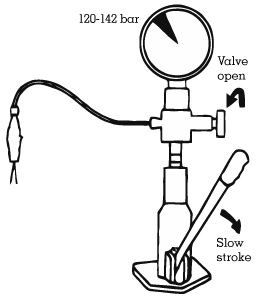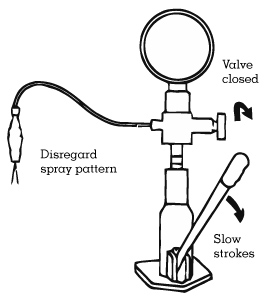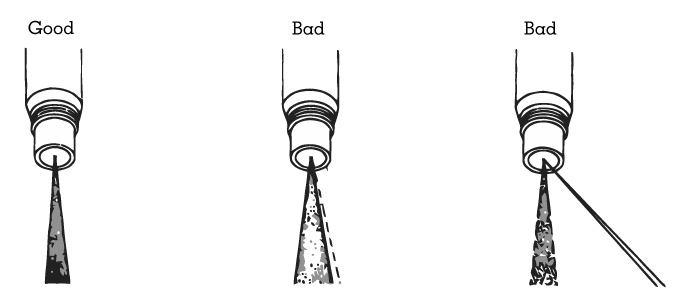Test injectors
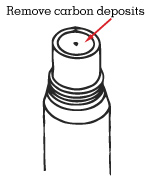 There are four tests for injectors. Perform the tests in the following sequence:
There are four tests for injectors. Perform the tests in the following sequence:
- Opening pressure
- Leakage
- Chatter
- Spray pattern
Bleed tester
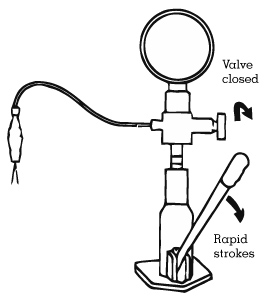 Remove carbon deposits from the injector tip with a small brass brush.
Remove carbon deposits from the injector tip with a small brass brush.- Mount the injector in the tester.
- Turn the tester valve clockwise to close the gauge.
- Operate the tester lever with rapid strokes to prime the tester and to bleed the injector.
- Turn the tester valve knob counterclockwise to open the gauge.
- Slowly depress the tester lever until the injector just begins to spray.
- Read the opening pressure. Should be 120 to 142 bar.
- Replace the injector if it is out of specifications.
Leakage
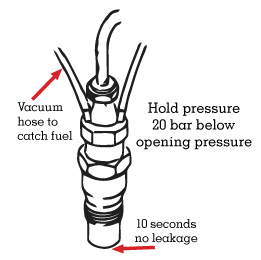 Install two pieces of vacuum hose on the injector return fittings to keep fuel from running down the side of the injector.
Install two pieces of vacuum hose on the injector return fittings to keep fuel from running down the side of the injector.- Dry the injector with compressed air or a lint free cloth.
- Slowly depress the tester lever until the gauge reading is 20 bar below the measured opening pressure.
- Hold the pressure for 10 seconds The injector should not drip.
(A drop may form on the end of the injector – this is normal).
Chatter
- Turn the tester valve knob clockwise to close the gauge.
- Operate the tester lever with slow strokes. (1 to 2 strokes per second)
- The injector should make a chattering or creaking sound if the injector is in good condition.
- Disregard the spray pattern when checking chatter. Spray pattern can only be checked at fast pumping speeds.
Spray pattern
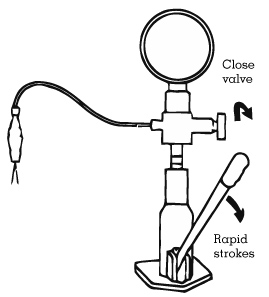 Turn the tester valve knob clockwise to close the gauge.
Turn the tester valve knob clockwise to close the gauge.- Operate the tester lever with rapid strokes (4 to 6 strokes per second).
- The spray pattern should be finely atomized and cone shaped.
- Replace injectors which have a bad spray pattern.
- The tester lever must be operated rapidly. At slow pumping speeds it is normal for the spray to stream or dribble out of the injector.
Safety
- Do not put your hands near the injector when testing injectors. The high pressure diesel fuel spray can penetrate your skin and cause blood poisoning.
- Always wear safety goggles when testing injectors.
- The injector sprays a finely atomized combustible mist when testing. Avoid sparks and high heat sources when testing injectors.
- Do not use gasoline as a “test fuel”.

